According to the Gazetteer of Yin County, Hanling Market has been a vital commercial hub in the southern part of Ningbo since the Song Dynasty, bustling with merchants and goods, earning it the nickname "Little Ningbo."
How did Hanling Village — a village-level administrative unit on the southern shore of Dongqian Lake, now part of Dongqian Lake Town in Ningbo’s Yinzhou District — come to be renowned as a “market” in ancient times? What gave rise to the lively scenes described by prominent Southern Song statesman Shi Hao in his writing: “In the village known as Hanling, fishing songs and the sounds of chopping wood intermingle”? Just how prosperous was Hanling Village in its heyday? Step into the Hanling Village History Museum, and the answers slowly unfold.

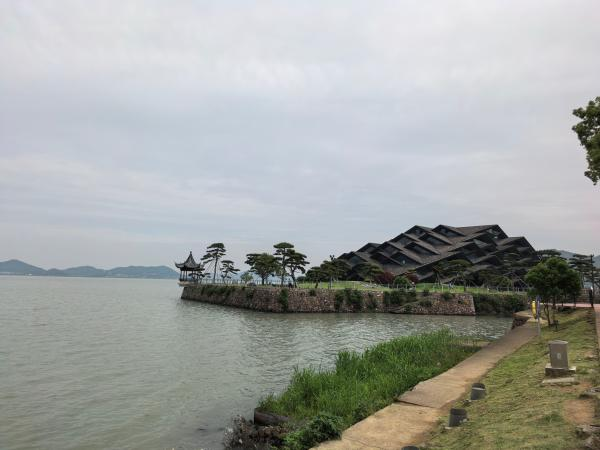
Then-and-now comparison images of Hanling Village inside the history museum.
The newly renovated Hanling Primary School gleams under the midsummer sun. Climbing the stairs to the third floor, sunlight slants through the glass doors of the village museum, illuminating the inscription “Hanling Village History Museum.” As the display lights flick on, shadows and light intertwine — as if pulling visitors into the depths of Hanling's past.
The timeline in the “Historical Evolution” section immediately draws the eye. Hanling Village sits at the mouth of a mountain valley formed by the branches of Mount Fuquan and Mount Jin’e. Two streams — one visible, one underground — run through the village, intersected by an old street that cuts through the heart of the settlement.
Historical records indicate that residents were already living here by the third year of the Tang Dynasty’s Tianbao era (744 CE). In ancient times, Hanling served as a vital transportation hub linking the towns of Xianxiang and Zhanqi to Dongqian Lake and Ningbo’s urban center. Its key position as a transit point for people and goods by both land and water spurred the growth of its market. At its peak, over 120 commercial shops and workshops operated here, earning the village the title of “the foremost ancient street in eastern Zhejiang.”
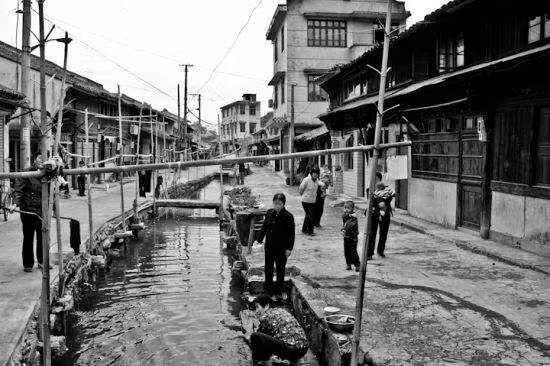
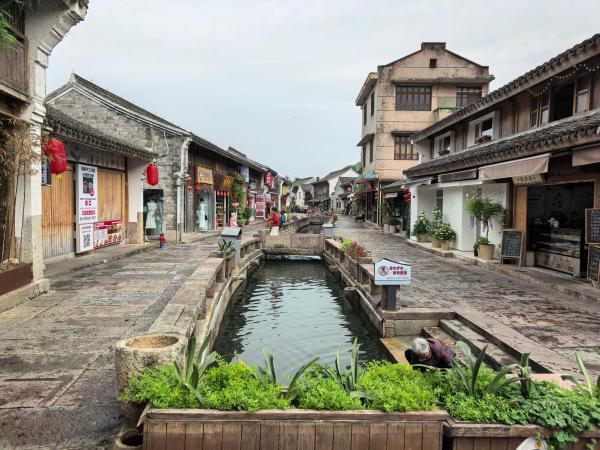
Then-and-now comparison images of Hanling Village inside the history museum.
Octogenarian villager Lu Dekang recalls, “When I was young, every 5th and 10th day of the lunar month was market day. Woodcutters would carry bamboo and firewood down from the mountains, while fishermen from Xiangshan Harbour would bring their catch along the lakeside. Goods from Ningbo and dried goods from the mountains would converge here, forming what was known as the three markets of Hanling: the firewood market, the bamboo and timber market, and the salt market.”
“People and goods relied on boats for transport. Locally, we called them ‘fire-wheel boats’ — there were more than ten of them, with two levels: cargo below, passengers above, each carrying over 20 people.” Lu adds with pride that pork prices in Ningbo were once influenced by Hanling's transport activity — a testament to its importance as a trading post.
These “fire-wheel boats” played a crucial role in the flow of goods and rural economic vitality for decades, until 1958, when sections of the Shengheng Highway (connecting Hanling to Xianxiang) were gradually completed. With this, Hanling's water-based transit function declined, and the boats eventually disappeared from history.

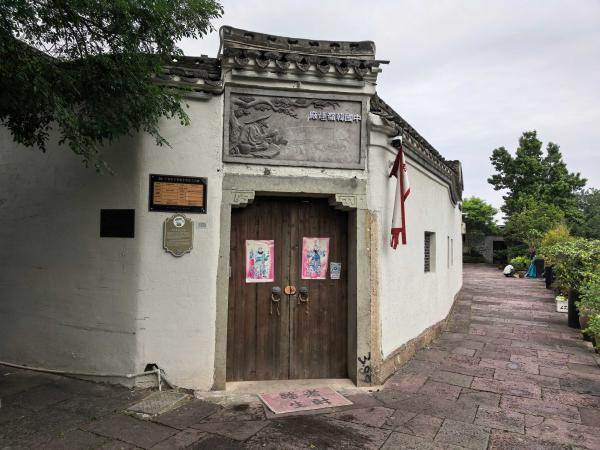
Then-and-now comparison images of Hanling Village inside the history museum.
Turning toward a display of historical artifacts, key “landmark buildings” of the village come into view:
The Hanling Cigarette Factory, established in 1921 by prominent comprador businessman Jin Yinsheng, was one of Ningbo’s earliest tobacco factories. According to the Gazetteer of Yin County, it had an annual output of 150 cases.
Hanling Primary School traces its roots to Jianhu Academy, founded during the Daoguang era of the Qing Dynasty by Zheng Mingli. With a legacy spanning more than 200 years, it embodies the ancient values of scholarship and diligence.
The Hanling People’s Education Hall, founded in 1930, was the first county-run educational institution in rural Ningbo. With 19 rooms and 12,500 books, it frequently hosted chess tournaments and swimming competitions, injecting vitality into village life.
A place shapes its people. In the “Notable Figures” section of the museum, visitors can learn about:
The upright and unambitious Jin Zhong and Jin Hua brothers;
Jin Yamei, the first Chinese woman to attend university in the United States;
Qing Dynasty official Zheng Zhongkun, who served as Provincial Commissioner;
And artist Sha Qi — known as “China’s Van Gogh” — who lived and painted in a Hanling villager’s home for 16 years.
These figures show that Hanling’s legacy isn’t limited to commerce; it also nurtured cultural and intellectual heritage.
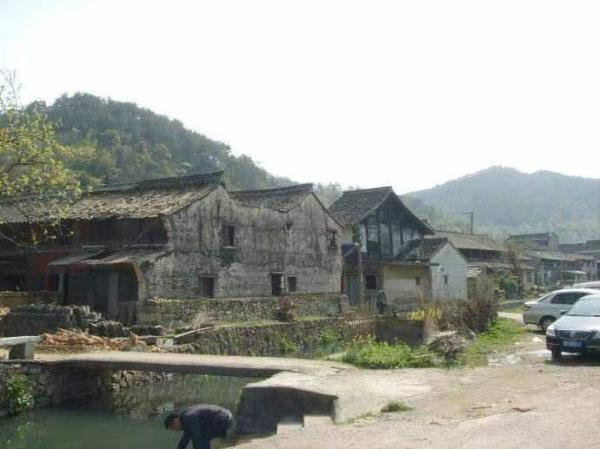

Then-and-now comparison images of Hanling Village inside the history museum.
From Han Shui District to Hanling Commune, then Hanling Township, and now Hanling Village — each name change marks the imprint of the times.
To preserve this rich historical memory, the protection and revitalisation of Hanling Ancient Village began in 2006, with official construction starting in 2015. Developers followed a philosophy of “restoring the old as it was,” preserving the original charm of the main old street and Water Street. They also introduced a variety of businesses — restaurants, creative shops, artisanal studios, boutique guesthouses. In October 2019, the area officially reopened. In just the past year, Hanling Village received over 2.2 million visitors.
Today, Hanling Village has become a “check-in” hotspot — where everyday life and poetic charm blend, where street-market vibrancy meets artistic flair.
This modest village museum carries the entire past and present of the village. Within its bricks and tiles are etched the songs of fishermen and woodcutters, the clamour of century-old shops. And to every visitor, it silently proclaims: Though the bustling markets that once made Hanling famous have faded, the name “Hanling” still rings out proudly — on this land now revitalized with new life.
Source: Yongpai
Reporter: Rong Meirong
Correspondents: Zhou Sijia, Lu Yanbo
Editor: Ye Ke



